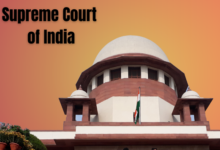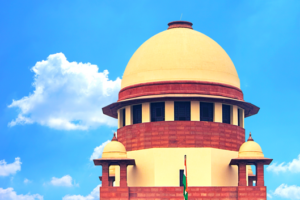Supreme Court to hear plea of Students against High Court verdict upholding ban on Hijab, Burqa in College

On Tuesday, the Apex Court said it has ordered the listing of a plea challenging the verdict of the Bombay High Court which had upheld a decision of a Mumbai college to impose a ban on the wearing of ‘hijab’, ‘burqa’ & ‘naqab’ inside the campus. The High Court had on June 26 refused to interfere with the decision of the Chembur Trombay Education Society’s N G Acharya & D K Marathe College imposing the ban, saying such rules do not violate students’ fundamental rights. It had said a dress code is meant to maintain discipline which is part of the college’s fundamental right to “establish & administer an educational institution”. Taking note of the submission seeking urgent listing of the appeal, a bench comprising Chief Justice D Y Chandrachud & Justices JB Pardiwala & Manoj Misra said it has already assigned a bench for the matter & that it would be listed soon.
Lawyer Abiha Zaidi, appearing for petitioners, including Zainab Abdul Qayyum, sought an urgent hearing saying the unit tests in the college are likely to commence on Wednesday. The top court is yet to conclusively decide the legality of such diktats issued by educational institutions. A two-judge bench of the top court, on October 13, 2022, delivered opposing verdicts in the hijab controversy emanating from Karnataka. The then BJP-led state government had imposed a ban on wearing the Islamic head covering in schools there. While Justice Hemant Gupta, since retired, had dismissed the appeals challenging the judgement of the Karnataka High Court which had refused to lift the ban, Justice Sudhanshu Dhulia had held there shall be no restriction on the wearing of hijab anywhere in the schools & colleges of the state.
The present controversy stems from the decision of a Mumbai college. The Bombay High Court trashed the plea against the ban & said the dress code was applicable to all students irrespective of religion or caste. The students, who were in the second & third year of the science degree course, had moved the high court, challenging a directive issued by the college imposing a dress code under which students cannot wear a hijab, naqab, burka, stoles, caps & badges on the premises. The students had claimed it was against their fundamental right to practice religion, the right to privacy & the right to choice. The college’s action was “arbitrary, unreasonable, bad-in-law & perverse”, the plea had said. The high court, however, had said it could not see how the prescription of dress code by the college violated Articles 19(1)(a) (freedom of speech & expression) & 25 (freedom to practice religion) of the Constitution.
“In our view, the dress code as prescribed cannot be held to violate the petitioners’ rights claimed under Article 19(1) (a) & Article 25 of the Constitution of India,” the High Court had said. The HC had also refused to accept the petitioners’ contention that wearing a hijab, naqab & burqa was an essential practice of their religion. “Except for stating that the same constitutes an essential religious practice on the basis of the English translation of Kanz-ul-Iman & Suman Abu Dawud, there is no material placed to uphold the petitioners’ contention that donning of hijab & naqab is an essential religious practice. The contention in that regard, therefore, fails,” the HC had said. Prescribing a dress code should be seen as an “exercise towards maintaining discipline”, & the right to do so flows from the fundamental right to establish & administer an educational institution under Article 19(1)(g) (right to practise any profession or run trade/business) & Article 26 of the Constitution, the HC had said. The dress code was mandatory only within the college premises & the petitioners’ freedom of choice & expression was not otherwise affected, it had said.





